Winter onions landing and care.
October 01, 2014
It is almost all grown garlic in the fall under winter, but onions rarely who. Everyone is used to that in the spring there are always ready-made seats, proven varieties and at an affordable price. Therefore, onions put onions only completely advanced gardens.
What is the most profitable landing of Luke:
1. Early greens, which will appear to May Day vacation;
2. A good saturation of the soil, which is necessary for the good development of Luke at the first stage.
3. Earlier maturation of the bulbs and harvesting, which will allow to release a bed for landing, for example, radish, dike or radish;
4. Early use and eating on Luka..
The above describes the main advantages. winter landing Luke, but there is, of course, and their own "but":
First, and this is the main thing, the culture of winter landing of Luke is lost;
Secondly, very few varieties of winter bows are represented now. The only thing I can immediately remember is the "Radar" grade, but try to find it on sale. There are other grades of Shakespeare, Troy, Sensui Yellow and others. But they are even more difficult to find them.
It seems to be an absolutely unfavorable situation, but it is not.
Spring varieties can be used for planting under the winter, including everyone's favorite and common "Stuttgarter", but you need to go to the selection of planting material. The success of the oxidic growing of the onion is the caliber of the planting material. The main problem, if you put ordinary segues under the winter is his in the summer. The bulb, who gave the arrow, is little suitable for further storage. As I have already written above, the main secret is the landing material of Luka Sevka. The larger the north, the higher the probability that he will go to the arrow. Therefore, for a winter landing, it is necessary to choose the smallest north, less than 1 cm in diameter (the so-called "Ovsyuzhka"), the plants of which will give an arrow only at 5-10%, and this is a very good indicator. Unfortunately, very often in the fall sells sevock last year, where small bulbs have already got drunk and only major remained. The main supplier of onion Sevka for us is Holland and the main harvest Sevka falls on September-October, and he does not have time to walk in the fall to Russia.
Another forgotten way of winter growing onions through seeds. Luke seeds can be bought by ever, and in the summer much cheaper.
Agrotechnology.
Savit landing is always made a month before the onset of negative temperatures and it can be combined with the planting of winter garlic. As usual, for our zone is the last decade of September and the first decade of October. It is possible to more accurately identify the landing time only on the behavior of frogs that go into a hibernation exactly a month before the onset of cold.
The landing is better carried out according to the diagram of 10 x 15 cm, to a depth of up to 5-7 cm. Luke landing can be additionally covered with some mulch, but the main thing is that it is not vegetable residues from other cultivated plants.
Landing seeds.
It is usually carried out at the beginning of the second decade of August with such a calculation so that the bow approaches the cold state of rest, forming 7-8 leaves. Initially, sowing is made thickened and in the future it takes to reduce to the norms and scheme of the standard landing, which can be spent in the spring, pulling onions on the greens. The bulbs do not dig and remain in the ground, but additional mulching is required.
Soil under the bow.
Easy and well-structured is always selected. From nitrogen fertilizers is required only by humus, not more than 10 liters per 1Q. m. Mineral fertilizers during the vegetation onions are negative, so their application is appropriate only in the preparation of the soil before planting. The best is the introduction of Calimag.
The best soils for onions are light loam and sandy, in more southern regions - chernozem.
Ordinary onions are not so racks to spring frosts like winter garlic, so the beds with winter onions In the spring, after the appearance of germs, it is best to close the nonwoven material on the arcs. This technique will greatly accelerate the development and ripening of the bow. If the soil is properly chosen and basic feeding are made from the autumn, then the bow does not require any more interventions, except for the weeding, loosening and irrigation on the weather situation, since onions are needed in the first 2/3 of its vegetation increased humidity Soil.
As a result:
1. Select varieties suitable for winter landing.
2. If there is no possibility to choose a grade for winter landing, then we plant the usual (regular) bow, but clearly select the smallest bulbs (less than 1 cm in diameter).
3. Squeeze onions with seeds. In this way, it is good to duplicate the landing of the sudden, as the sevoch has great chances to freeze under adverse weather conditions, and the seeds have a certain hardening.
4. Soil under the onions process deeply, fertilize by humus and mineral fertilizers, First of all, must contain potassium and magnesium.
5. Mulch the planting by humus, the foil straw and even can be dry dung (horse or cow).
6. In the spring, after the appearance of germs (and better before), we close the landing by observer nonwoven material on the arcs.
Onions, probably, the most popular plant in country houses and gardeners. Experienced lovers of their vegetables and fruits planted onions not only in spring, but also under the winter. The right selected variety brings rich yields.
There are arrangements of a bow with high adaptability to any weather conditions, one of these miracle plants - the rudar brand bow. We will get acquainted with him and its useful qualities. More details.
The main characteristics of the variety
The radar variety is sweet, the peninsula onions, which was brought by breeders from Holland for more than twenty years ago. It has average maturation dates - after 250 days from the date of landing in the earth, the bulbs are ready for collection. In late May, you can harvest.
 Sevov Radar has strong and dense gold-colored flakes that protect the bulb from frosts when snow cover is below the norm. It allows you to land onions like winter culture. The cold resistance is the natural quality of the Radar onion, which reduces the likelihood of the swing to zero. The bow of this variety has high resistance to disease and pests.
Sevov Radar has strong and dense gold-colored flakes that protect the bulb from frosts when snow cover is below the norm. It allows you to land onions like winter culture. The cold resistance is the natural quality of the Radar onion, which reduces the likelihood of the swing to zero. The bow of this variety has high resistance to disease and pests.
The leek head matures a large, rounded, slightly flashed, rolled an average of up to 150 grams. Separate copies under favorable conditions reach three hundred grams. The cervix at the bulb is thin, root system Powerful. When observing the agricultural equipment, the harvest receive a consistently high, dry onions is perfectly stored, while maintaining all useful qualities and a commodity look.
Radar variety bow has significant advantages, it for example:
- Early maturation.
- Excellent taste.
- Major bulbs with a long shelf life.
- High variety yield.
- Onions does not give arrows.
- Excellent bleed.
- Does not require watering until mid-May.
- Ripening three weeks before other varieties.
 Yield at the variety radar stable, high, from one square meter Collected up to seven-eight kilograms of Luke. The correct sign of the readiness of the winter onion in cleaning - the scales become the gold color. The traditional procedure for the assertion of the bow, the necessary and onion radar is a thorough dryer for three days under sunlight or under the fresh air canopy. Delivered usually in a ventilated room. The onion will dry relatively long time so that the shelf life is also long.
Yield at the variety radar stable, high, from one square meter Collected up to seven-eight kilograms of Luke. The correct sign of the readiness of the winter onion in cleaning - the scales become the gold color. The traditional procedure for the assertion of the bow, the necessary and onion radar is a thorough dryer for three days under sunlight or under the fresh air canopy. Delivered usually in a ventilated room. The onion will dry relatively long time so that the shelf life is also long.
The neck dried - the bow is ready for the trimming of the leaves and the roots. Cropped bulbs are placed on storing in wooden boxes or piping grids, transferred to a dry room.
Lowned onions-Sevkov in the fall saves and time and money: non-viable bulbs will die in winter, in their place you can depart separate specimens, the falling place is much cheaper in the fall. Juicy sweet with mild bulbs can be used in fresh formThey look good in pickling with other vegetables. Look flaws Radar at the moment: yield is slightly lower than that of spring landings.
Agrotechnology of Growing onion-Sevka
This Luke grade does not require special efforts to grow. But nevertheless, in the agrotechnology of the cultivation of the Radar, several important nuances can be distinguished:
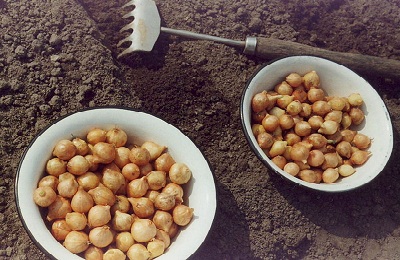
Radar grade as a whole resistant to onion diseases: fusarious rot, peronosporosis or false puffy dew Able to damage the harvest. In the preventive period, it helps well wood ash, it is sprayed on a plot with onions. also in preventive purposes Every two weeks are carried out by treatment with copper chloroks or other fungicides.
Winter bow Radar often attacks onion flies. Against it is sold in specialized stores insecticides.
Observing simple recommendations on the cultivation of the onion radar can be ensured fresh vegetable Its family already at the end of May, when the main stocks are already eaten, and they have not appeared on the store shelves. After the winter period, fresh vitamins are extremely necessary and useful to human body.
Do you still seem to get rid of cardiovascular diseases impossible?
- do you often bother pain and discomfort in the chest?
- it seems to you that the heart almost "jumps out" from the chest, it freezes for a while ...
- you have a shortness of breath, even after a slight physical activity ....
- headaches, bad sleep, feelings of weakness and increased fatigue ...
- by evening, legs swell ...
What is winter onions for? Naturally, for a rapid harvest, already since the second half of May, the harvest can be collected, while the autumn onions matures for two or more months later. Also, who overwhelmed into the ground onions, besides what he ripens, more resistant to diseases, less susceptible to pests.
Preparing a landing place
Onions are planted in the same place where he previously grew up, no more than two years in a row, and then take a break. Of this general rules worth sticking if you are interested in getting good harvest. Planting onions in the same place is not earlier than four years later, and then, and in five years. The bow is best growing where the harvest, corn or white cabbage was previously removed.
It is advisable for landing onions to choose areas with humid and sandy soil, or with a predominance of humus drums.
Onions, capable of impressing and cause admiration, cost to plant warm rivers on the climb.
General recommendations are as follows: a plot - dry, ventilated, without a tendency to form water stagnation. It is necessary to create an opportunity for draining rain and melting water, or practical will choose the defense immediately on the hill.
Warning. If you are interested in loose bulbs, and a large sheet weight, then, of course, you can make fresh manure under the landing of Luke-Sevka. If, you do not want to put dubious experiments, you can use humid or compost as a fertilizer. And, even the best, it would be, to bring them under the preceding culture.
What kind of grade to choose and why?
First, small bulbs do not throw up the arrows, why can not fear cold and spring frosts, wait excellent crop Benign onions. The reason, as they say, on the surface - nutrients There are few in these bulwacks, it is not enough for the release of the arrow with seeds, but for the winter and the beginning of the spring they accumulate an acceptable number of these important components of food to be happily served in the spring.
Secondly, it is a truly economical option, small bulbs, no matter how spring landing It would not be reached, and so, spent to obtain a decent harvest. In addition, the area after the early bow will be needed for spring planting of vegetables.
Sale onions right! Rules landing
We carry out the grooves, take away from 10 to 15 cm. Between them. We make landing of bulbies using step 3 - 10 cm., Planting depth from 3 to 4 cm.
- The distance varies depending on the arrangement of the bow selected by landing. The greater the bulbs, the most with the distance between them - the power area should be sufficient.
- The depth (3-4 cm) is explained by the fact that if it is less, then the bulbs in the spring are separated from the soil.
- Lukovichny necks do not cut.
The furrows need to sprinkle the earth and mulch, but no need to water.
- Mulching is carried out before the expected cold. It is acceptable to use dry leaves, dry grounding, fabric, plant tops, stems of flowers, sawdust, pine needles and other material.
- There is a danger of an outerflake at frosts below -20 ° C, so it is better to delay snow on the site.
Landing dates of winter onions
Winter onions plant prior to the beginning of the real winter, before frost. It is desirable that the interval remained from the time of the planting to the onset of frosts. Since weather conditions change each year, you should carefully follow the forecasts. It can be done like this: the temperature declined, established steadily +5 ° C and lasts a few days, do not expect more, plant.
Onion care is important
In the spring, when snow comes down, the first thing we remove the mulching material for the speedy soil warming. Link soil, and remember that it should be done every time after heavy rains or irrigation. At the same time, you can make a fit of planting, using chicken litter (divorced).
Appeared the leaves - we make the second feeding. It can be used for it - immunomodulators, antistressants, growth stimulants (planafol, for example)
How to scare from your site onion fluff.
- Near the bed, or even in the center of it, you should plan a calendula and velvets. This is a very effective tool will save sown safe.
- Did not have time to plant a calendula? Not trouble, take advantage of chemical assistants, but take care of your health, collect onions no earlier than a week after the execution of this operation.
- Did not have time to plant a calendula, but do not want to use chemicals? There is another, quite suitable, option. Sprinkle between rows of planted onion tobacco dust, or the same dust mixed with lime.
- If processing with chemicals or tobacco dust is used to protect against onion flies, then it should be remembered that such processing should be done twice (the interval of days 8-10). The reason lies in the same amount of generations flies. The first - June, the second - mid-July.
While the bow is growing, one who has a better sheet mass should be taken to the pen, giving growing and developing other bulbs located nearby. Ensure carefully, because the damaged bow is not focused, and is not stored for a long time.
The sign of ripeness of Luke is the acquisition of cover scales characteristic of a given variety of color, for example, orange, or blue and red. Also on the ripening of the bow indicates the lodge of the leaves. Sometimes the leaves are specifically placed in order to accelerate maturation, but still it is better to wait for the natural completion of the process.
The assembled onions should be dried on open place With constant access of fresh air. Only absolutely dry onions is well stored, so pay attention to the dryness of its roots and leaves.
Poorly stored unfortunate onions, as well as having a juicy thick neck. Similar onions use first.
After harvesting, the place where the bow was planted, can be reused. Radish, carrots, turnip, beets, Daikon (white radish, also known as Japanese, or Chinese radish) also known as Japanese, or Chinese radish). These cultures will fully have time to mature to cold weather, besides the fact that, for example, beets, and carrots are not afraid of frosts and are well cultivated by cool autumn.
Was this article useful?
Well no
From all vegetables onions is used most often, probably, so it is grown on each cottage plot. Traditionally, everyone is engaged in sowing in the spring, only quite recently, in the 90s of the last century, vegetables began to grow frowning onions. It turned out that it was very convenient and profitable - in the fall, you can plant the smallest north, and in the spring to get onions from May. Usually, the onion of the north is difficult to preserve before sowing, the largest thing is used, but the small one has to throw out, but it turned out that the early greens and major rek are growing from it.
Promotional landing Luke-Sevka is becoming increasingly popular among dacnis. Winter onions does not require additional hassle associated with its cultivation. On the contrary, in the spring, when the dac of deeds are not necessary, it is not necessary to water it, it is enough to reveal the bed and engage in other cultures. Spring moisture impregnated with the whole garden will be enough for its growth. In the spring, when not all the goas still ascended after sowing, the winter bow is already ready to give his feathers, and by the middle of the summer you can already get a rusty repka.
But not all of the north is suitable for a centenary sowing, you need to choose early, that is, those grades of winter bows, which are capable of forming a repka at a twelve-hour light day. Of course, the bow should be frost-resistant, the varieties grown in the southern regions are not planted under the winter.
Today you can already choose the most suitable hybrid varieties that have enough coolness and repka are formed, without waiting for the longest daylight day, which allows you to remove the harvest in the summer from the end of June to the beginning of August. Experienced vegetables give preference to Dutch varieties. 
For many years, the grade "Shakespeare" has been left for many years, which forms the bulb weighing 100 g. It is distinguished by high frost resistance - calmly withstands frost to -18 degrees (in the presence of snow cover even lower temperatures), and ripens in 75 days from the reception . A large rounded bulb with a white juicy flesh is not a particularly sharp taste covered with brown scales. Cooking scales Sevka are very dense, which allows him to worry very cold winters.
A wonderful crop gives the "Radar". His repka with sharp taste covered with golden scales, has a middle weight of 150 g, with good conditions It grows up to 300 g. This variety also easily transfers strong winter frosts. 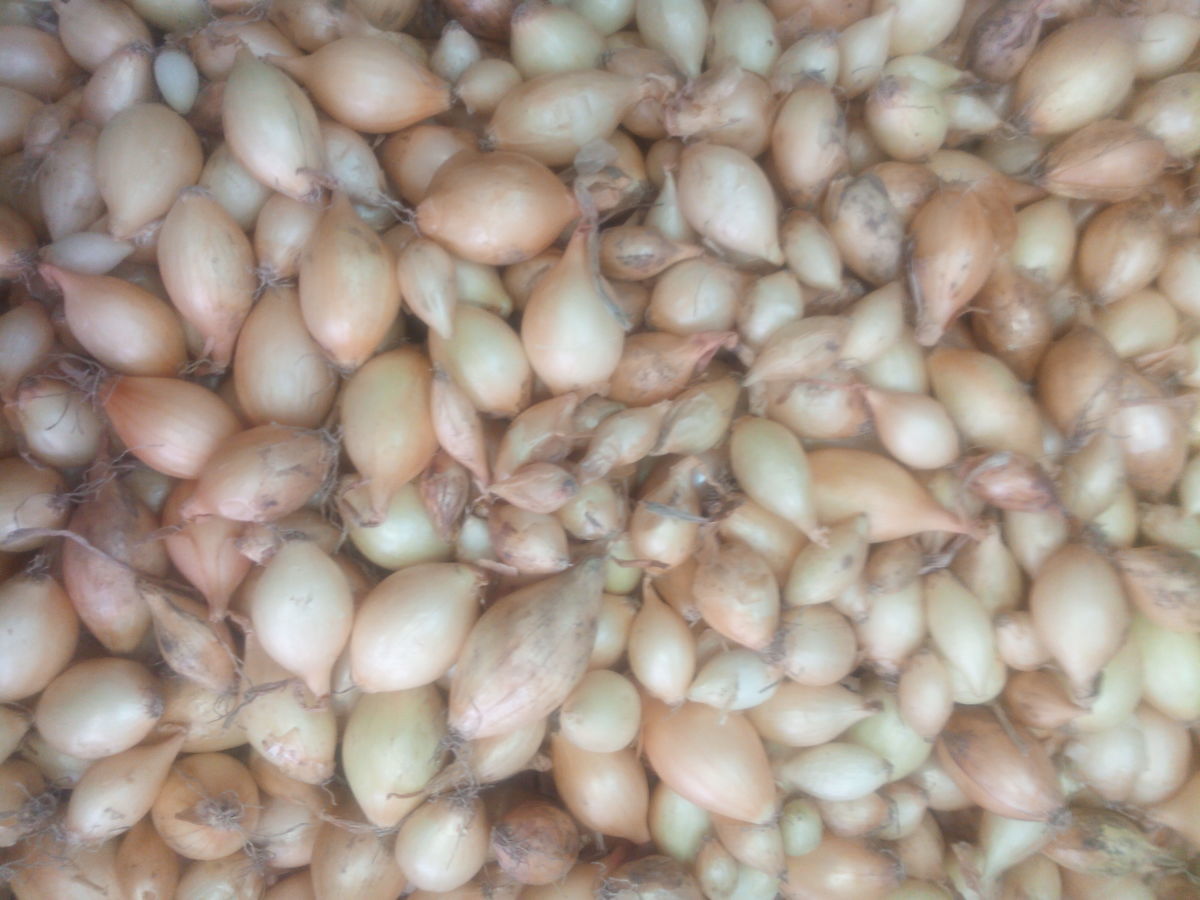
Variety "Elalan" and "Sensui" spare very well, easily carry low temperatures. Sweetish repfts "Elana", weighing from 80 to 120 g, can already be used since the beginning of June. And the sharp "Sensui" is well and for a long time.
Large ellipsoid bulbs of grade "Sturon" have golden exterior and slightly greenish internal cocery scales. They ripen for 60 - 70 days, and they can be stored for up to 8 months.
The bulbs "Stuttgarter Rizen" love sandy soils, they are affected in two months, have a sharp taste, the shape is stuck, covered with golden brown scales. This variety is known for rich crops.
Very good for autumn planting They are considered "Baron" with a large sharp taste and rich vitamin with bulbs, "centurion" from the average size of the sharp taste of bulbs and almost one hundred percent germination. Praise specialists of the Kip-Vell grade, "Bamberger" with repka elongated form, they are unpretentious, do not deliver a lot of sorcerer, but please early harvest. And "Kip-Vell", as the name says, does not lose its flavor and nutritional qualities during long-term storage. 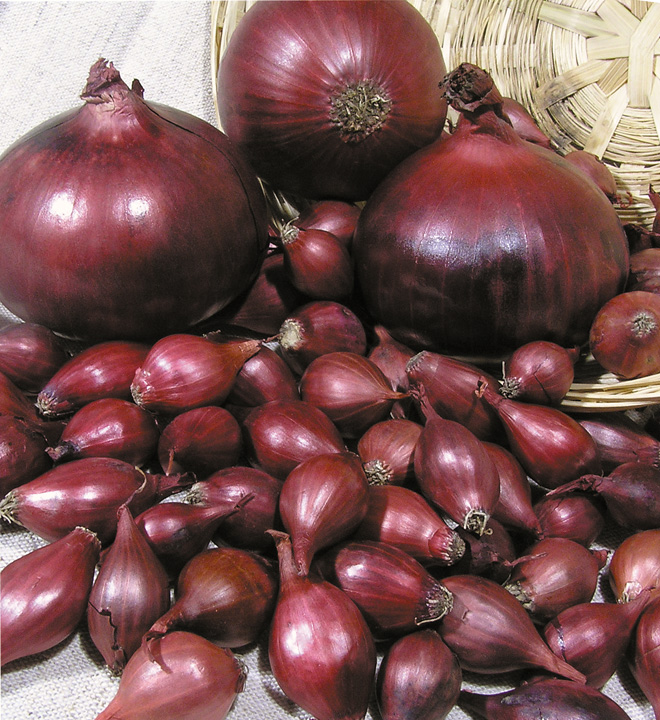
There are different in their characteristics wintering grade of Luka-Sevka, you need to get acquainted with the descriptions, and only then choose the one that is most suitable for your purposes, as well as for the conditions of the site.
Video "Sorts"
From the video you will learn what kind of onions are most popular.
Growing
The winter onion begins to grow much earlier than the spring is even sown. As soon as the Earth pulls off, it begins his growing season, grows, not missing a single warm day. The Earth until May is full of moisture, which is enough for a full-fledged growth, the gardener does not need to spend time on watering, but as long as he is engaged in other vegetables, the early bow is ready to give him his vitamins, first they consume a features, and then repka. Early varieties You can remove gradually, choosing for constant use from spring, and Land-timed assembled after full ripening. 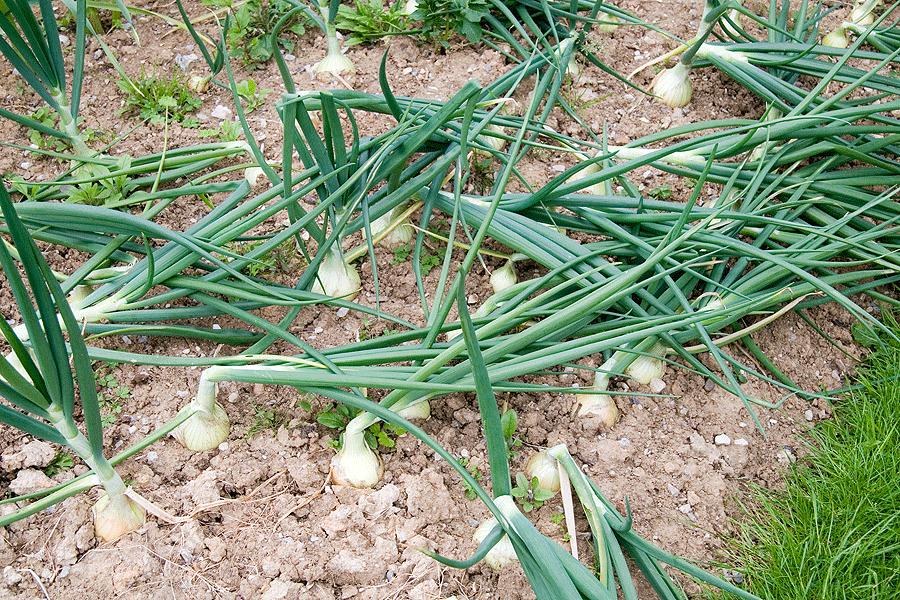
When the spring onion matures, it is turned around, sent to long storageAnd the little thing is left for crops. For spring sowing, a bulWhi is selected in size from one to one and a half centimeters, not all of them will be saved until sowing, but those that are less than 1 cm, will definitely do not live to spring. They can be tried to put under the winter. Of course, some part of them will die, but the other part grows in the spring. This is very profitable - the harvest (and the early most expensive and desirable) will give rejected bulbs. And if you take the seeds of special winter grades for sowing, then there will be no losses.
Sowing onions under the winter produces a month before the arrival of Morozov, so that he would have to root, but the growth was postponed on the spring. The beds are prepared after harvesting - they will be released from plant residues, they jump off, if necessary, they bring overwhelmed dung (fresh manure cannot be added), wood ash.
Onions in one place can be grown not more than two years in a row, and then take a break for five years. If the garden grew cauliflower, legumes, cucumbers or tomatoes, then fertilizers will be enough for those who were introduced under these cultures. It is not necessary to water the bed, otherwise the bulbs can be contrary. Bow loves high Grokes, not a sour subline or soup fertile soil. 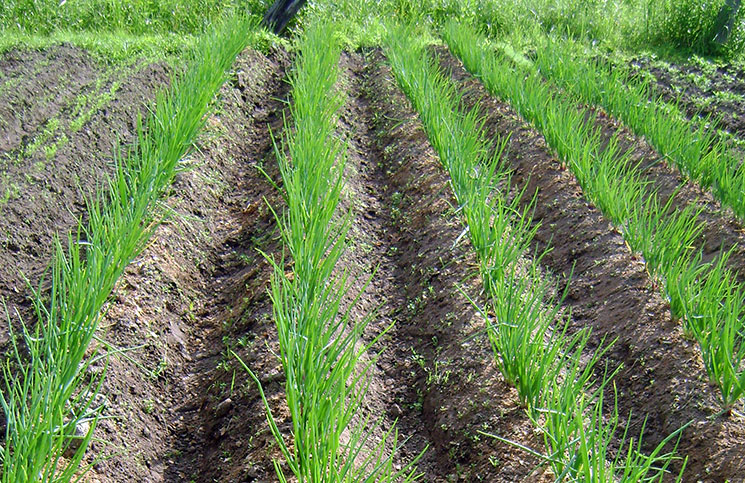
When the temperature is stably set at a level slightly higher than zero, it's time to return to the prepared bed, to make a groove at a distance of 15 - 20 cm, planting the seaws to a depth of 3 cm after 5 - 10 cm, fall asleep with loose ground, it is slightly thus. The distance between the bulbs depends on the variety and what is important to grow - feather or repka. Above the bulboys should not be more than 3 cm of the Earth, so that the spring sprouts enough forces to get to the sun, and less - so that it was not fluted on the surface of the melting water. The landings are not watered, and in front of the most frosts, mulk peat, dry leaves, hay. All this would be nice to cover with dry branches, so that the wind does not raise this undercover material to the snow. 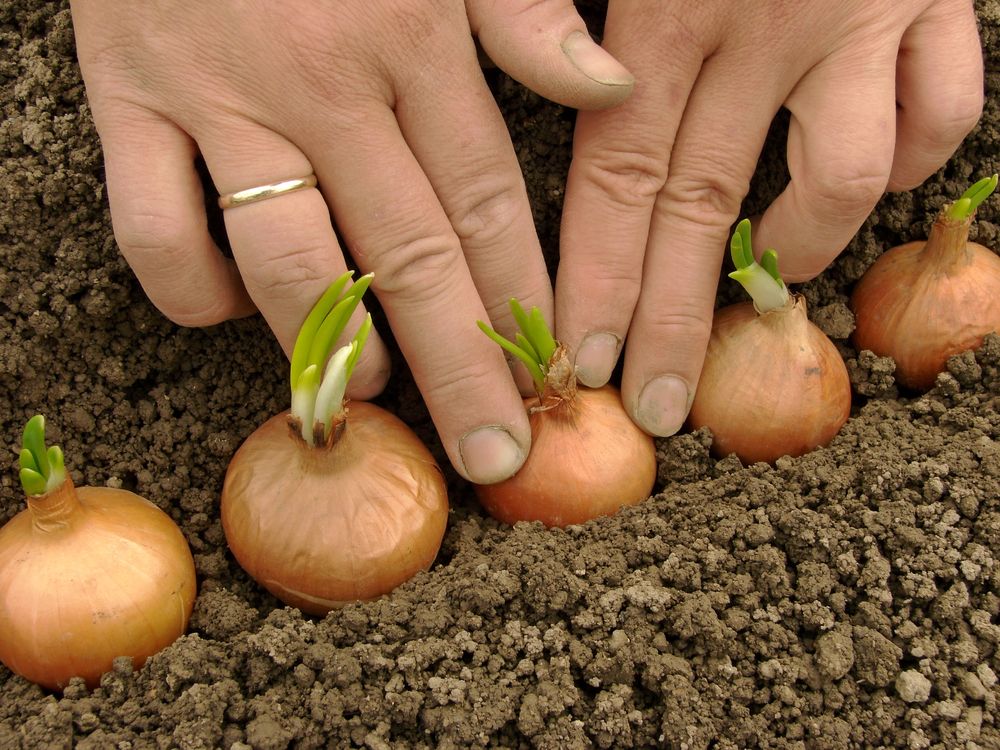
The winter onions can be sowing in August - September, then he will have time not only to root, but also to germin. Such landings make in a wet land, then also watered at least once. Before Morozov, the bow will have time to grow 5 - 7 leaves, they must be reinmed by a special passionate material or a thick layer of dry leaves, sweetheart. In the spring, such a bow will earlier will begin to increase the repkah, by the beginning of the summer there will be mature onions.
Care
In the spring, as soon as the snow melts, and it will be possible to go to bed, you need to remove the mulch. Watering the landing for a long time will not need, but carefully dispel the earth is preferably. All departure is a weeding, loosening after watering and rain, feeding, pest protection. In the spring, you can close with a special covering material at night to speed up growth. Can be powered by a solution of infusion bird litterIf the soil is depleted. Next subcord Recommended to do when leaves will appear. Luka will need nitrogen for rapid growth Il phosphorus with potassium for the formation of repka. But it is better to undermines fertilizer him than to overcome with them - repka can grow deformed, and an excess will also go into food. Usually, the garden knows the state of the soil on its plot, the feeding is needed only where it is completely devoid of humus. 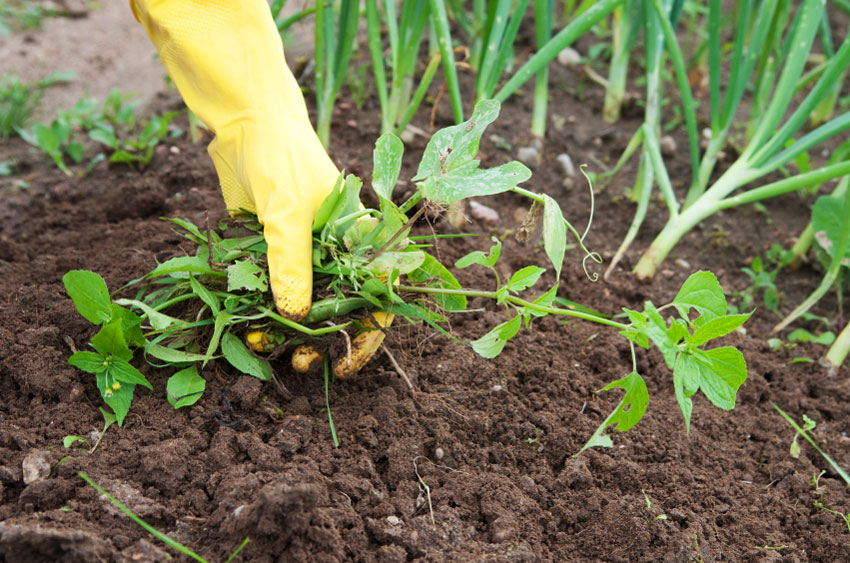
Selecting the place for growing onions, it is not necessary to consider the beds where potatoes, celery, parsley, clover, alfalfa, can be inherited. If you need to struggle with diseases or pests, it is very important to remember that the onions grown on the pen cannot be treated with pesticides. Compliance with the rules of crop rotation will simplify the care of plants.
It is necessary to water regularly, but not too much so that the water is not stuffed. It is necessary to loosen the earth in order to the roots come to the roots, but it is necessary to do it very carefully, if you injure the bulb, it can be infected. After loosening, it is desirable to climb the earth, it will help less often water and loosen it.
We cannot say exactly when removing the bow, it is impossible to say exactly - maturation depends on the weather, specific conditions of soil, leaving, varieties of plants. The main indicator - the leaves fall, and the covering scales of repka are acquired by a colorful color. So it is time to collect a harvest - the onions are undermined by a pitchfork or a shovel, choose, dried. The storage is cleaned when the roots and leaves are completely dried.
disadvantages
Previously, sowing gardeners considered the shortcomings of the centenary sowing that not all the lows would gem, and it is impossible to store a long winter harvest. Today there is a large selection of varieties, among them there are those at all hundred percent, there are late varieties, the harvest of which is perfectly stored for at least 8 months. So you can talk about the disadvantages, if you only sow fall onions, usually growing in the south, requiring a very long daylight and heat. But if you come to sowing It is reasonable, then only advantages are found.
Video "Landing"
From the video, you will learn how to effectively plant onions.
The bow radar, the description of the variety of which is given below, is a very popular plant. With the onset of winter on the shelves began to disappear vegetables. But everyone saw how the Radar bow appears with the cold shelves. Not everyone knows the description of the variety of this miracle plants. On his benefits and incredible adaptability to weather conditions, few people thought. This information will provide an exhaustive material on the origin of Luke and how landing and bowing over the bow for the winter is produced.
Description of Luka Radar
Radar bow is a variety of Dutch selection Radar F1. Refers to the subfamily of the onion and the family of amarylline. He has very strong outdoor scales, so it can withstand frosts up to -15 ° C in the absence of a high level of snow and up to -23 ° C upon availability. It is due to the ability to transfer cold temperature The plant is steadily for short. Also, the advantage of this winter bows is immunite to pests and diseases. So all winter planted onions will feel comfortable.
One more a distinctive feature Luke Radar are large sizes of heads. Grow bulbs in 150 gr. Will not be difficult. In some years, with a thorough care, the radar grade can reach 300 g of weight.
At Luka Radar Dark green leaves with a small wax chain, the bulbs are slightly flattened rounded shape of golden color.
They are very dense. Can reach a mass of up to 300-500 grams. Have a large root system. Thanks to very dense external and inner scales, this grade of Luke can be kept for a long time. Plus, Radar Luke is that the big bulbs arches for May, by the time the main stocks have already ended.
How is the landing?
Pluses in landing Radar for the winter, unlike the usual, very much. First, time saving for landing - landing and leakage Radar does not require special skills and skills. Secondly, the bow, which after the winter is still grown, very good and healthy. Weak dying in the winter. Solding winter onions in the fall is much cheaper than spring, as the planting material is not as expensive.
There are many bite varieties for the winter, the sowing principle is about the same. The most fruitful land for the winter bow - after legumes, potatoes, grain, cucumbers and corn. The fertilizer of the Earth, before the landing of the bow for winter is made, for 1-2 months, will not harm, but the structure of the soil will improve. Although this variety can be planted almost on all types of soils, it is absolutely unpretentious to the ground. Buy better the smallest north. With a lot of little peas can be planted much more.
Before boarding the soil you need to process and clean. Sowing seeds to spend 1.2 million hectares in the square, when the entire harvest is already assembled.
The soil must have time to suit a little and compact. For convenience, you can dig row and fall asleep in a row seeds according to the 1x10 scheme for a depth of 3 cm. But if the earth has long been empty and cool, the seeds can be filled to a depth of up to 6 cm. The landing must be completed before the onset of strong cold weather, because he should have time to go Roots. After landing, it is recommended to cover with sowing something, but it is not necessary for the rudar. You can be reinsured, since weather conditions can be completely unpredictable. You can use dry leaves or hay as a coating. In no case use the polyethylene film.
Radar onion
Despite the fact that the landing and care of the rudar is quite simple, for successful cultivation you need to know about some recommendations:

- The most dangerous pest for such a plant, like winter bow radar, - Lukovaya Fly. Against it is treated with insecticide substances.
- Radar Growing Radar may prevent perilosorosis disease. To avoid it, it takes every two weeks to process the plants with contact fungicides, copper chlorokis. If the humidity in the air is high, processing should be carried out once a week.
- It is impossible to allow the growth of weeds.
- If the beds had a shelter, no need to forget to remove it immediately after the ease of snow. But for the Radar, the radar does not necessarily do cover.
- Landing is better not to thicken. When the winter onion grows, it is necessary that the beds have a little left, and the distance between them was about 10 cm.
Failure can comprehend even experienced gardener. The following factors can be reasons:
- Winter bow Radar grows by April. If you put on the bulbs too early, they will have time to germinate for the winter.
- With very wet soil, the bulbs can tackle.
- It is impossible to close the bulbs deeper than 10 cm.
- And the last factor that no one can predict exactly - weather conditions. Due to too frequent thawing and hypothermia, the bulbs can be spoiled.
Vintage Luka Radar
The vegetation period of Luke Radar is 250-260 days. On the same bed, the bow can be grown only two years in a row. Other vegetables, especially tomatoes, beets, turnips, will take place, on the contrary, excellent. And only 5 years later, it is possible to plant a bow radar on the same place again.
As mentioned above, after the retreat of the cold, the agrofibles immediately need to be removed. In the early spring rain rains, the land periodically needs to be disappeared. As fertilizer use litter. The final sign of the ripeness of winter bows is the acquisition of gold-colored flakes.
For drying, Radar has standard principles. After harvesting, we leave the plant for 2-3 days under the right sunlight. Then attributed to the attic to dry. Onion will dry long. It is important to be patient here, because the better to dry the bow, the longer it will be stored. If the neck is dried, then you can be stored.
Not everyone can grow the bow radar. And find out if this variety is suitable for your bed, it is possible, only inserting the harvest once.